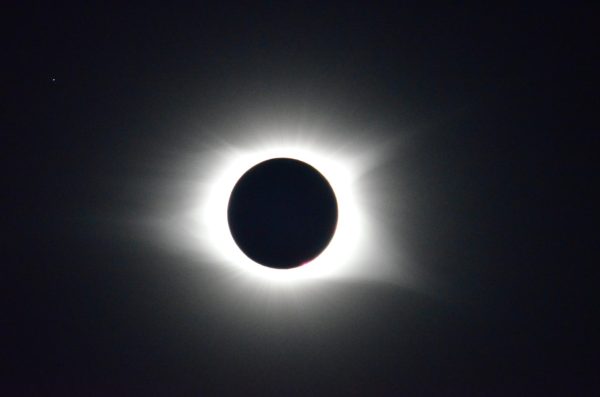
Haile Planetarium is hosting a solar eclipse party on Monday, April 8 for students to come watch and learn more about the solar eclipse.
What exactly is a solar eclipse?
Dr. Chari Ramkumar, a pre-engineering and engineering physics professor, explains that a solar eclipse is when the moon comes between the sun and the earth, which blocks the light heading towards the earth.
“An eclipse is basically when one object blocks another object or casts a shadow,” Ramkumar says.
He also explains a bit more about why total solar eclipses are more “hyped up.”
“[It’s] very interesting because the object that is blocking the sun from all of you is [the] moon, and [the] moon is much smaller,” Ramkumar explains.
Along with the usual hype that comes from a solar eclipse, this year’s solar eclipse is important because it’s the last one that will be near the tri-state area until the year 2099.
“I’m excited because the next one going to be in the U.S. is going to be in 2044, but in this area, it’s going to be 2099,” Ramkumar said.
Party in the path of totality
The eclipse party that Christa Speights, director of the Haile Planetarium, has planned will be in Findlay, Ohio which is in the path of totality. This means there will be nearly four minutes of the total eclipse.
“So, if you’re up in Dayton, you get two minutes and 43 seconds of totality,” Speights says. “We get three minutes and 46 seconds. And if you’re on the centerline, you get like three minutes and 57 seconds depending on where on the centerline.”
During the event, students will have many different activities to do, ranging from small eclipse-themed crafts to informative shows explaining more about what an eclipse is.
“We’ll have multiple tables with different activities, kind of like at a festival,” Speights explains.
She further goes on to talk about an activity that uses a small, round piece of construction paper and chalk to create the sun’s corona (the sun’s outer atmosphere). Along with this activity, Speights continues to explain about another one that involves using stickers to track the solar eclipse. Originally, this activity was called Oreo cookie eclipse and was supposed to use Oreos to track, but Speights expressed that she didn’t want to “worry about food allergies or any of the ethical issues with chocolate.”
Although she decided to switch up the Oreo activity, Speights does have an edible activity for students to do. It’s called “sun cookies.” This activity allows students to create a model of the sun along with sunspots (dark spots on the sun’s surface) and solar prominence (arcs of gas that go beyond the surface of the sun).
“Oh, sun cookies. Sugar cookies, white frosting, yellow and red sprinkles, Red Twizzlers for prominent provinces and sunspot jelly beans,” Speights explains.
She also plans to have an activity called “plastic cup solar projector,” which allows students to create their own solar projector that allows for a safe view of the sun throughout the day.
Another event is one that involves textile books, which are books that allow you to feel what’s going on. This table is where Reagan “Ray” Coursey, a freshman physics student who works with Speights at the Haile Planetarium, will be set up showing off the books while also explaining how everything works.
“I’m going to be reading to people, explaining to them how things work and doing little demonstrations.” Coursey said.
There will also be a special activity for kids to help avoid them from looking into the sun during the solar eclipse. This activity will help prevent children from getting their eyeballs sunburned, a problem that can be caused when intense solar radiation hits the eyes, specifically the retinas.
“Even though most of the visible light we usually get when the sun isn’t reaching us during a solar eclipse, the ultraviolet light, gamma radiation is really intense,” Coursey explains. “Potentially harmful forms of non-visible light still reaching earth could still hurt your eyes very badly.”
Another possible activity is Dr. Ramkumar giving a presentation on photography, specifically involving taking pictures of eclipses. Though this depends on if he will be present at the event.
“Christa was asking me whether I could do a session on say, how to take pictures of the sun when the eclipse is happening. So, I said, “I will be more than happy to, but if I’m going to be there, I will do that,” Rumkumar.
Ramkumar continues by explaining that there is a forecast of cloud coverage for the area and depending on that, he may have to travel to a different location to get the pictures he is hoping to take.
“If you look at the weather forecast for the northeast, you can see pretty much the cloud coverage,” Ramkumar said. “But things could change at the drop of the hat.”
Although Ramkumar’s possible presentation may not happen depending on weather, there are still lots of other fun activities to go and explore on this eclipse adventure.
The way to sign up is a QR code on flyers around campus or on their website. Tickets will be $20 and will include lunch, eclipse glasses and a goody bag.
If you are unable to attend but will still be on campus, eclipse glasses will be given during the main part of the lunar event.

